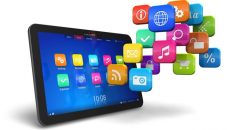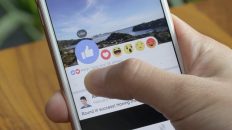 If America’s presidential campaigns are to an extent keen contests over which candidate can master fast-changing landscape of communications technology, for now Barack Obama holds a clear lead over his challenger, Mitt Romney. According to a new analysis of how their respective campaigns are employing digital media to talk with voters directly, bypassing the traditional media, the Obama campaign managers have posted almost four times more content as that of Romney campaign. The former have been proactive on nearly twice as many social platforms. Also, his digital content has managed to engender far more response – double the number of views, comments and shares of his posts.
If America’s presidential campaigns are to an extent keen contests over which candidate can master fast-changing landscape of communications technology, for now Barack Obama holds a clear lead over his challenger, Mitt Romney. According to a new analysis of how their respective campaigns are employing digital media to talk with voters directly, bypassing the traditional media, the Obama campaign managers have posted almost four times more content as that of Romney campaign. The former have been proactive on nearly twice as many social platforms. Also, his digital content has managed to engender far more response – double the number of views, comments and shares of his posts.
A new mode of ‘conversation’
Similar to campaign by John McCain four years ago, that of Romney has taken steps to close out the digital gap, like the Romney-Ryan ticket announcement made via his campaign app. In turn, the Obama campaign has tried to quickly adapt by redesigning its site. These are among the findings of a study by the Pew Research Center’s Project. It took a closer look at the two campaigns’ websites and their postings on YouTube, Facebook, Twitter etc along with the public response to that content.
In theory, digital technology lets leaders engage in a new mode of ‘conversation’, transforming campaigning into something much more dynamic, entering into a dialogue with voters, which was not the case a few decades ago. But the presidential candidates, for the most part, are making use of their direct messaging as a way to push their political messages out.
Are candidates truly social media savvy?
This incidentally is the 4th presidential election cycle analyzed by the Pew Research Project for Excellence in Journalism regarding the scope, reach and impact of digital campaign communications. In addition to the presidential campaign sites, PEJ this year broadened its study to include an examination of content on Twitter, Facebook and YouTube, avenues that were either still evolving or that candidates hardly used four years ago. Its study examined the direct messaging from the two campaigns for two weeks during the summer, during which they together published 782 posts. The research also carried audits of their websites twice – in June and again in July. What are the broad conclusions?
- Neither campaign had made much usage of the all-important ‘social’ aspect while using social media. Rarely did the two comment on, reply to, or ‘retweet’ something from any citizen or anyone else outside the official campaign.
- Roughly 3 percent of the total 404 Obama campaign tweets studied during June were citizen posts’ retweets. Romney’s campaign actually produced merely one retweet during the two weeks studied, repeating something (not so important) from his son Josh.
- Campaign sites still remain the hub of overall digital political messaging. So even if someone happens to start on social network page of campaign, they mostly come back to the main site- either to donate money or to join a community, either to read anything or to volunteer.
- The Obama page redesign emphasized only the centrality of his campaign site further. Instead of sending users to its YouTube channel, the video link embeds the videos directly into the site, only those that Obama ‘wants you to view’.
On Romney’s digital platforms, citizen content was minimal whereas the Obama campaigners made better use of active citizen voices, largely in the area of the ‘news blog’ on its site wherein that content flow could be controlled. While the troubled economic conditions remained the major issue in their digital messaging, both camps discuss that subject in different ways; Romney’s focus being on jobs whereas that of Obama getting partly philosophical, a sort of discourse on the relevance of the middle class.




